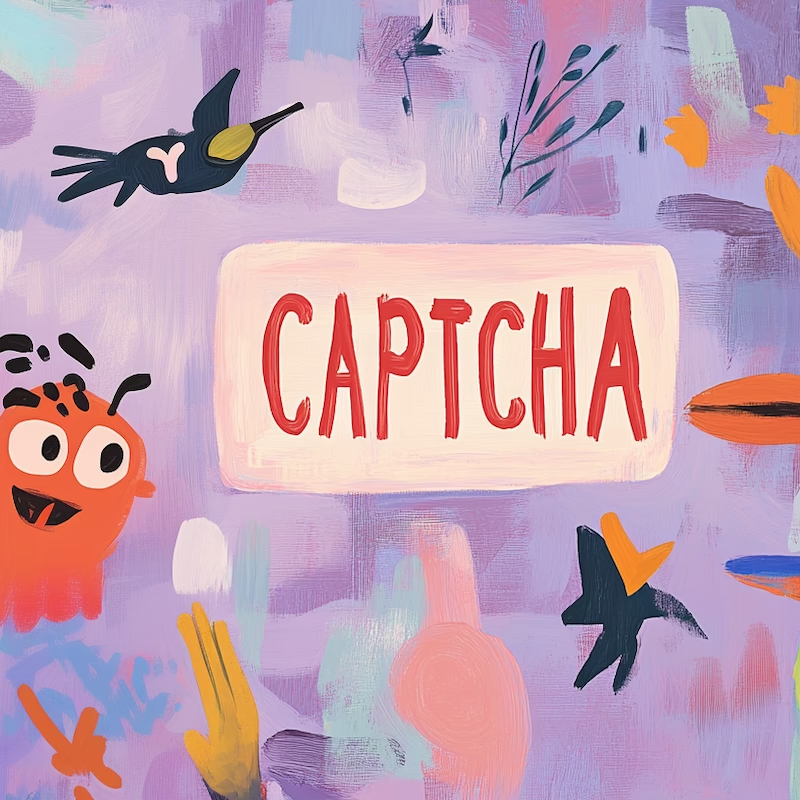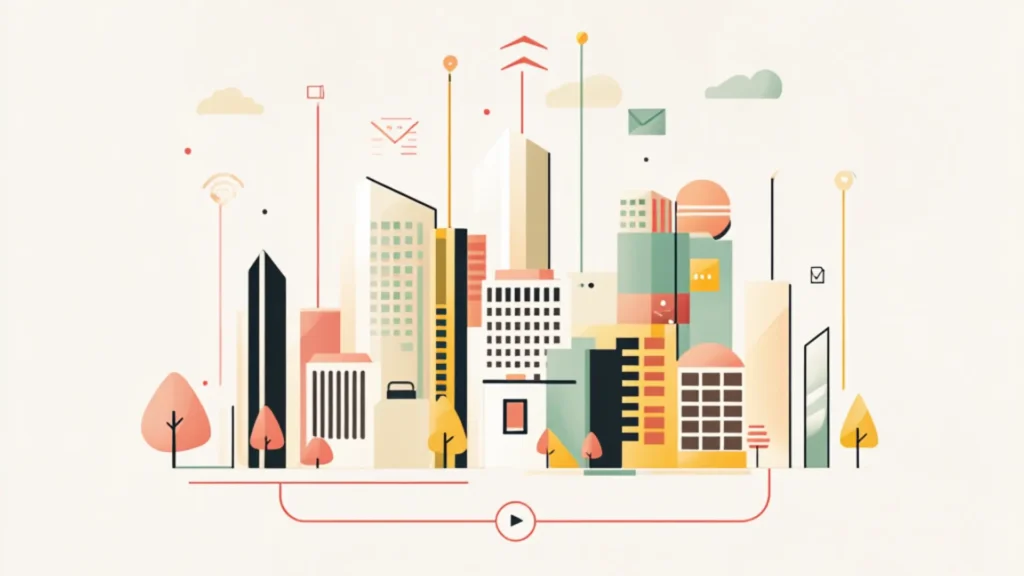
You’re in a hurry, trying to grab concert tickets before they sell out. You fill in your details, click “Purchase” and then—bam!—you’re stopped:
“Select all images with crosswalks”
You stare at tiny, pixelated squares, wondering if that blurry line is a crosswalk or just a sidewalk with dreams. After a few painful guesses, you finally get it right—only to get hit with “Please verify again.”
At this point, you’re probably yelling, “Why does the internet think I’m a robot?!”
Well, my friend, you’re not alone.
Welcome to the world of CAPTCHA verification—a security feature we all love to hate.
Let’s break down what it actually is, why it keeps getting harder, and whether those online “CAPTCHA jobs” are even real.
CAPTCHA 101: The Internet’s Bouncer
Imagine the internet as a giant party. You’re a legitimate guest, but the club (aka the website) has to keep out bots—those unwanted digital gatecrashers that flood comment sections, steal data, or snatch up all the concert tickets before you get a chance.
Enter CAPTCHA, short for Completely Automated Public Turing test to tell Computers and Humans Apart. It’s a challenge designed to prove you’re human. Ideally, it’s easy for people and hard for bots.
Real-Life Bot Problems CAPTCHAs Prevent:
- Spam attacks (like 10,000 “Buy fake sneakers!” comments)
- Brute-force login attempts (bots guessing passwords 24/7)
- Ticket scalping (bots buying out events to resell at jacked-up prices)
- Fake signups that overwhelm systems and skew data
Without CAPTCHA verification, the internet would be overrun with noise, scams, and automation abuse.
What Does CAPTCHA Mean, Technically?
Let’s get nerdy for a second.
The concept behind CAPTCHA was influenced by the idea of the Turing Test, which was proposed by Alan Turing as a way to distinguish between human and machine intelligence.
The idea is simple: give users a task that’s easy for humans but difficult for automated programs—like reading distorted text or identifying traffic lights in photos.
So when someone asks, “What does CAPTCHA mean?”, the short answer is: it’s a test to prove you’re not a robot.
How Do I Enter a CAPTCHA?
Entering a CAPTCHA is usually a straightforward process, though it can sometimes feel like a puzzle. Here’s what to expect when you encounter one:
Step 1: Identify the CAPTCHA
Depending on the site and its risk level, you’ll see different forms of CAPTCHA. You’ll often see a distorted string of letters and/or numbers, a series of images, or a simple checkbox.
Step 2: Complete the Challenge
🔡 Text-based CAPTCHAs: Type in the characters you see in the box. These characters are distorted to make them harder for bots to read. Just enter them exactly as shown, even if they look jumbled or odd.
🖼️ Image Recognition CAPTCHA: If prompted, click all images that match a specific object, like “crosswalks” or “buses.” Sometimes, you might need to click multiple boxes or click “Verify” to confirm your selections.
☑️ Checkbox CAPTCHA: Simply click the “I’m not a robot” box. Google’s reCAPTCHA, for example, only requires you to click ‘I’m not a robot,’ but behind the scenes, it analyzes your mouse movement, click timing, and browsing history to determine whether you’re human. If the system needs more verification, you might be asked to complete additional steps like identifying images.
🔊 Audio CAPTCHA: You listen to a robotic voice read out a series of numbers or words and type them in. These exist mainly for visually impaired users, where you listen and type what you hear.
Step 3: Submit Your Response
Once you’ve completed the CAPTCHA, click “Verify” “Submit” or whatever button the site gives you to confirm your answer.
Here’s something surprising from Stanford’s research: when three different people are shown the same image CAPTCHA, they only agree on the answer 71% of the time. For audio CAPTCHAs, that number drops dramatically—to just 31%. In other words, audio CAPTCHAs are much tougher for humans to solve than image-based ones.
Step 4: Repeat if Necessary
If your response isn’t accepted, it might be because of an error in recognition. Try again, or you may get a different CAPTCHA type, like audio or image-based.
Quick tip: If you’re constantly failing CAPTCHAs, your browser settings (like VPNs, privacy extensions, or script blockers) might be making you look suspicious.
Why Are CAPTCHAs Getting So Hard?
Because AI is getting really good at solving them.
Back in the early 2000s, distorting text was enough to confuse bots. But now, CAPTCHA AI is becoming smarter—some bots can read text better than people and even solve basic image CAPTCHAs.
To stay ahead, developers have built more complex verifications:
- More complex image-based challenges
- Invisible CAPTCHAs that silently analyze user behavior
- Behavioral tracking like how fast you move, where you click, or how you scroll
- Audio challenges (For accessibility, but good luck deciphering those robotic noises)
- Browser fingerprinting and IP analysis
Ironically, artificial intelligence is making CAPTCHA smarter, because AI is also making bots smarter. It’s a never-ending arms race between security developers and bad actors.
What Does CAPTCHA Verification Mean?
CAPTCHA verification is the process of proving you’re human before a website allows you to do something—like logging in, making a purchase, or posting a comment.
Behind the scenes, it may analyze:
- How fast you respond
- How your mouse moves
- Your IP address and location
- Your browser’s fingerprint (unique settings and plugins)
It’s more than a click—it’s a mini-interview. You’re not just saying “I’m human” You’re behaving human enough to convince the system.
Websites use CAPTCHA to block:
- Spam bots that auto-fill forms
- Credential stuffing attacks with stolen passwords
- Scalpers and snipers snapping up limited items (e.g., tickets or sneakers)
- Denial-of-service (DoS) attacks that flood a site with traffic
By requiring CAPTCHA, sites reduce abuse and stay usable for real people.
⚠️ Be cautious: Some fake CAPTCHAs are designed to trick you into running malicious code on your device. These scams may prompt you to follow steps that paste and execute a dangerous PowerShell script, which can install malware like Lumma Stealer and Amadey Trojan—both capable of stealing passwords, cookies, and crypto wallet data. If a CAPTCHA ever seems suspicious or appears on an unfamiliar website, avoid interacting with it.
Is CAPTCHA Entry Job Real or Fake?
Now, this might surprise you: there are people who solve CAPTCHAs for a living. But before you quit your job…
The so-called CAPTCHA entry job—where you’re paid to solve CAPTCHAs all day—is mostly a scam or part of shady operations.
Here’s what’s really happening:
- Bot farms hire humans to bypass security systems
- Illegal data scraping or hacking attempts
- A massively underpaid gig (think $0.50 per 1,000 CAPTCHAs)
- You could unknowingly contribute to spam networks or cyberattacks, putting both yourself and others at risk.
Even if these jobs exist, they’re neither legitimate nor ethical. No reputable company hires people just to solve CAPTCHAs.
So if someone offers you a CAPTCHA entry job, it’s probably:
- A scam trying to collect your personal information
- An exploitative gig that pays next to nothing
- A front for a larger, unethical operation
In short: Don’t fall for it. CAPTCHA entry jobsare usually fake, exploitative, or unethical, not a real career path.
The Future: How Does CAPTCHA Work with AI?
As AI gets smarter, CAPTCHAs have to step up their game.
In fact, some AI models can already solve traditional text CAPTCHAs better than humans. So, developers are racing to stay ahead—constantly updating CAPTCHA systems to outsmart bots.
This has led to the rise of more sophisticated systems like reCAPTCHA v3. Instead of throwing puzzles at you, it works behind the scenes, watching how you move through a site and scoring how “human” you seem.
Ironically, AI is both breaking CAPTCHAs and helping build smarter ones—a nonstop game of cat and mouse.
One thing’s clear: as long as bots exist, CAPTCHA AI and human verification aren’t going anywhere.
TL;DR (Too Long; Didn’t Read)
- CAPTCHA = Completely Automated Public Turing test to tell Computers and Humans Apart.
- It’s a security tool to block bots and verify human users.
- CAPTCHA verification protects websites from spam, fraud, and abuse.
- CAPTCHA entry jobs are usually fake, unethical, or extremely low-paid.
- CAPTCHA systems are evolving thanks to AI—smarter, stealthier, and harder.
So the next time you’re stuck clicking on blurry bus images or mistaking mailboxes for hydrants, take a breath. CAPTCHA isn’t personal—it’s protection.
After all, in a world full of bots, proving you’re human is the price of entry.


